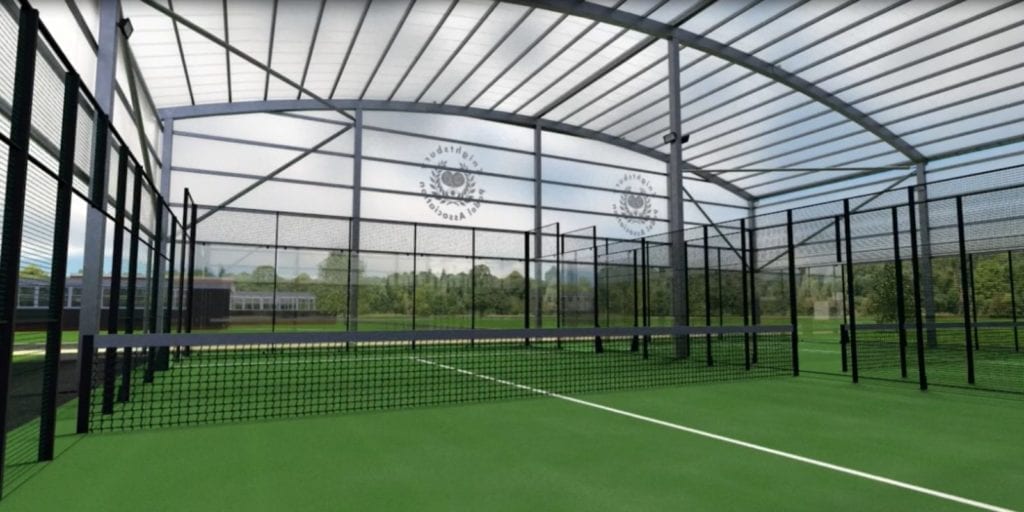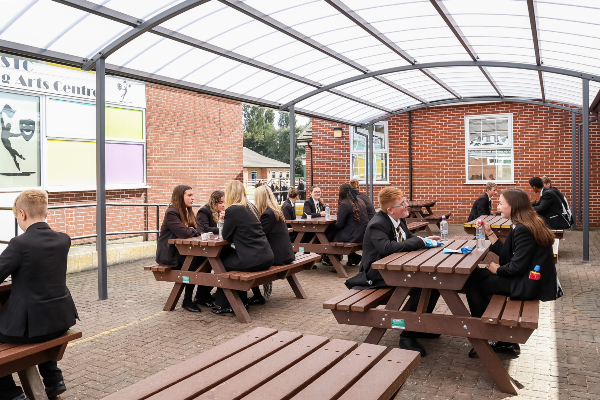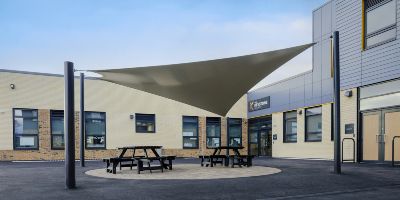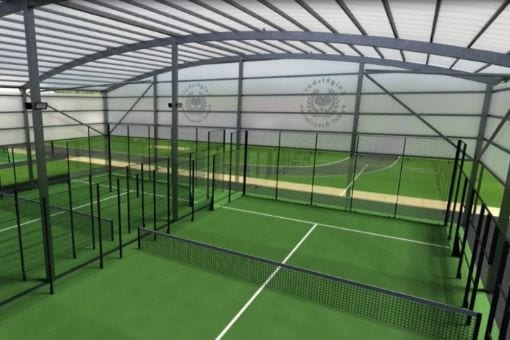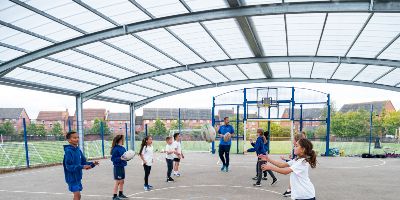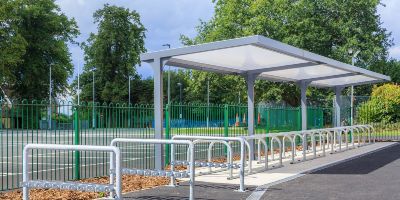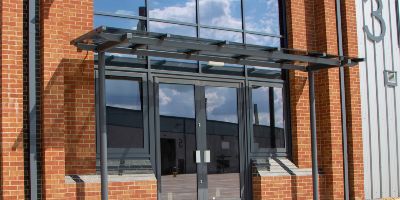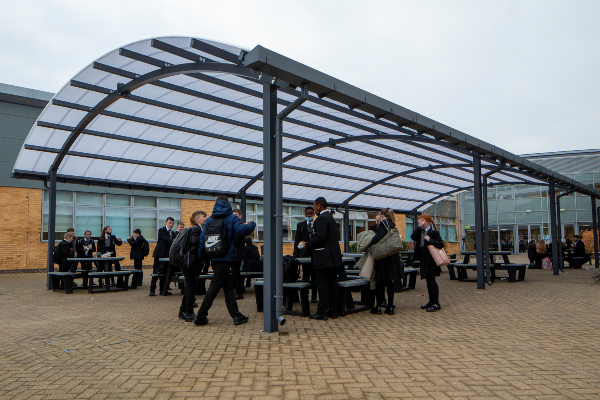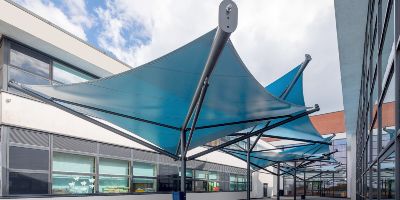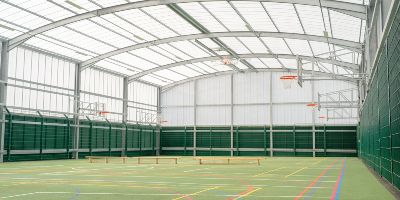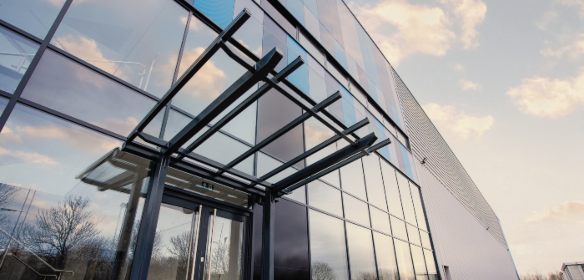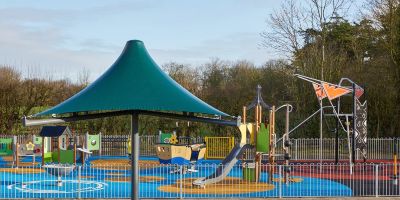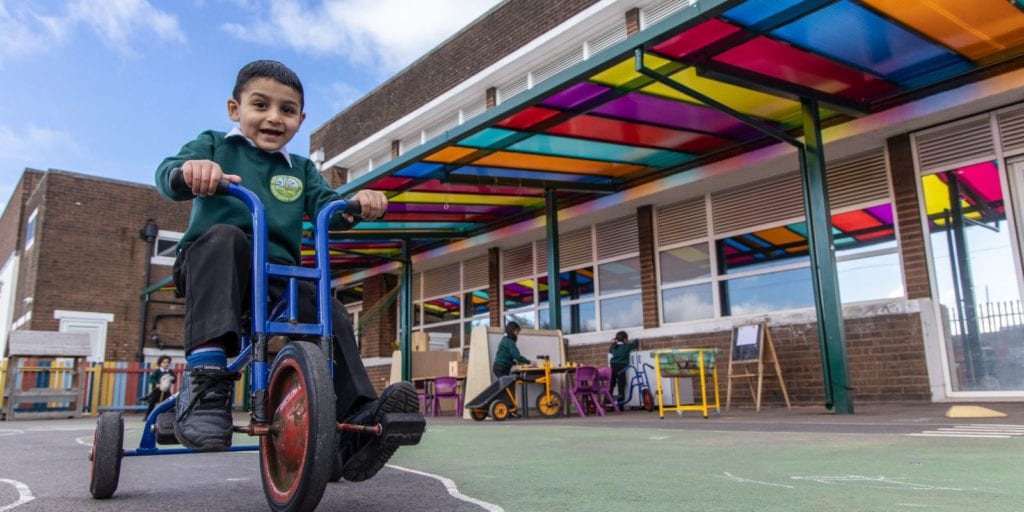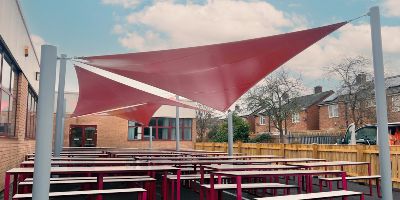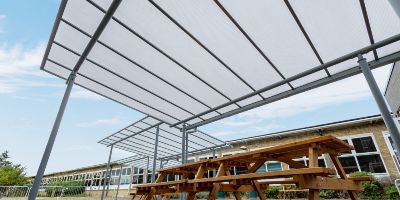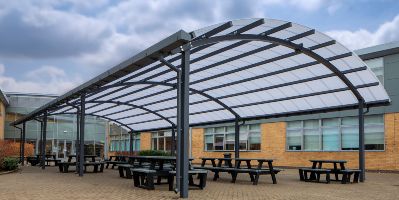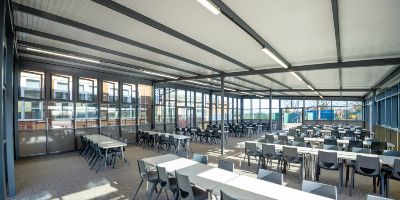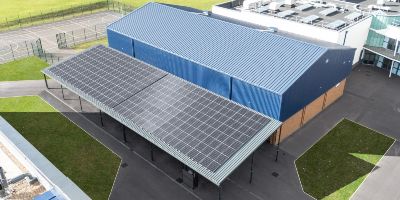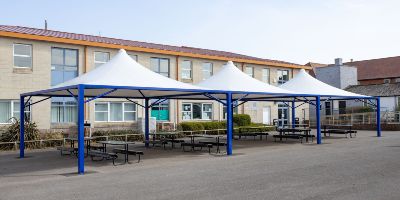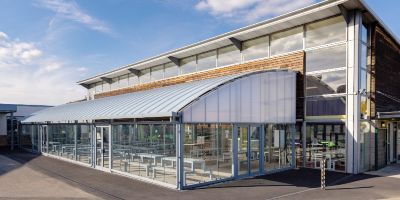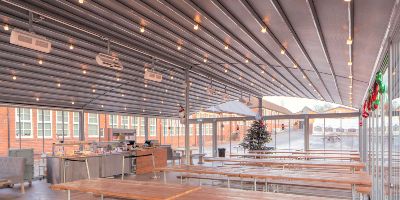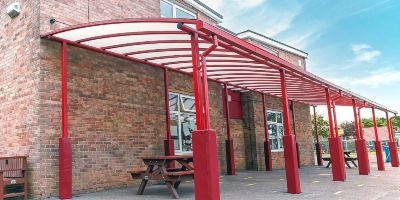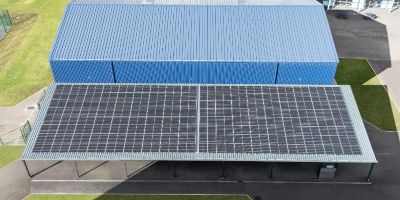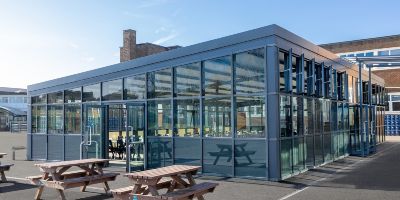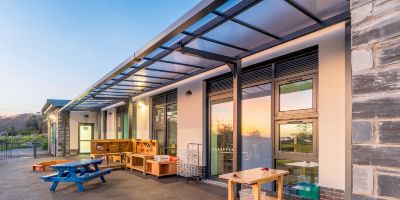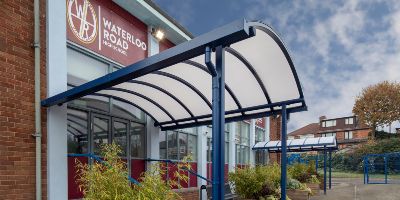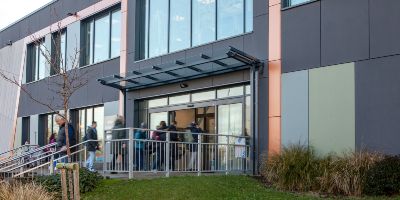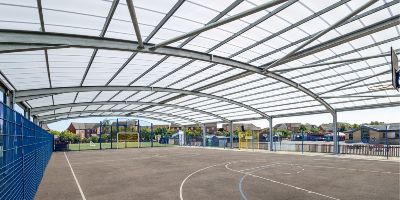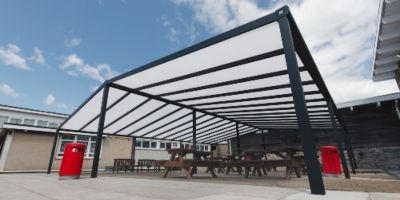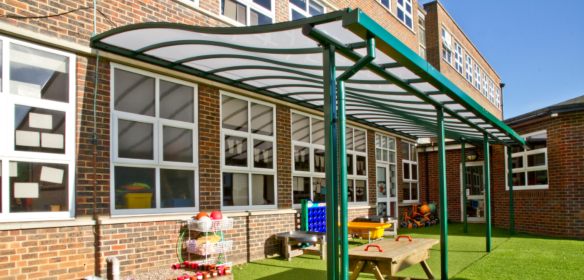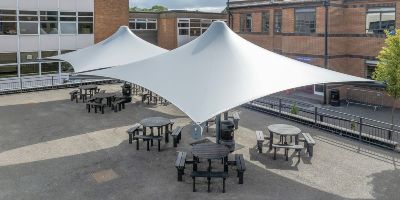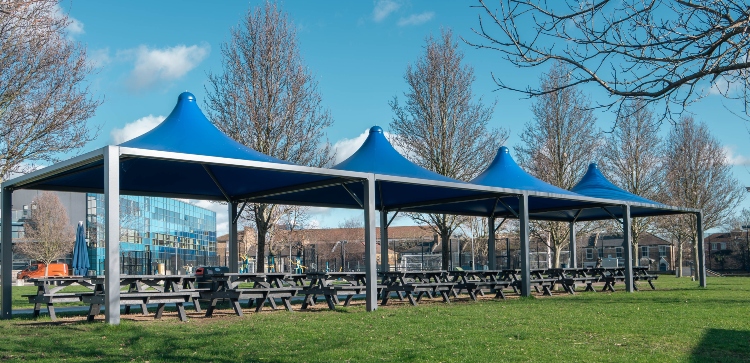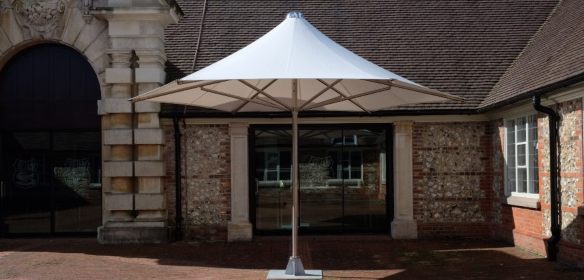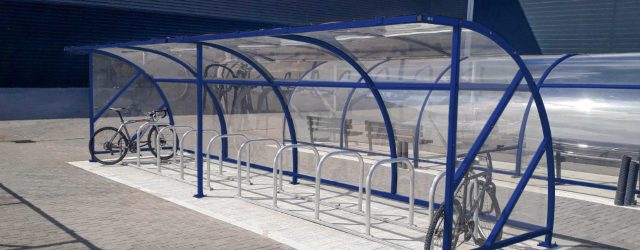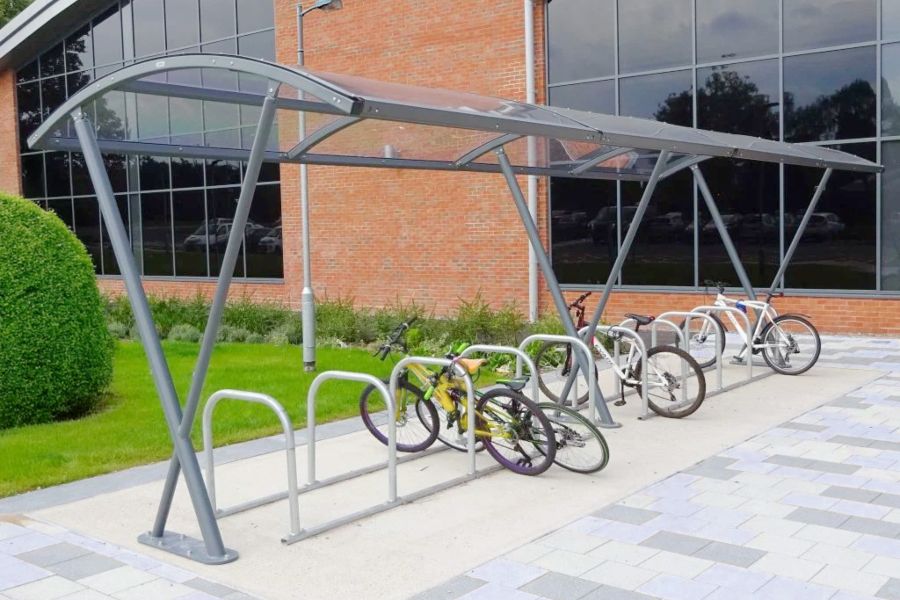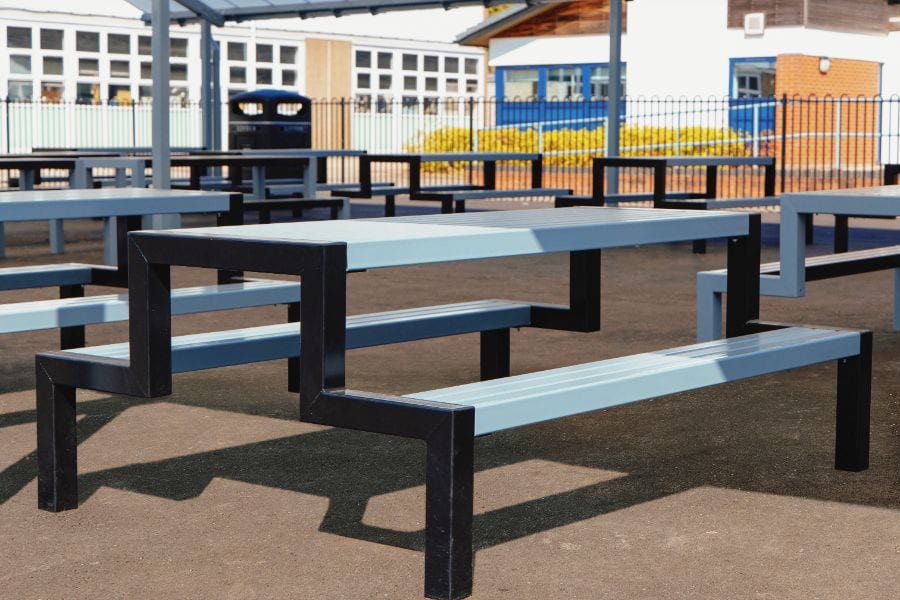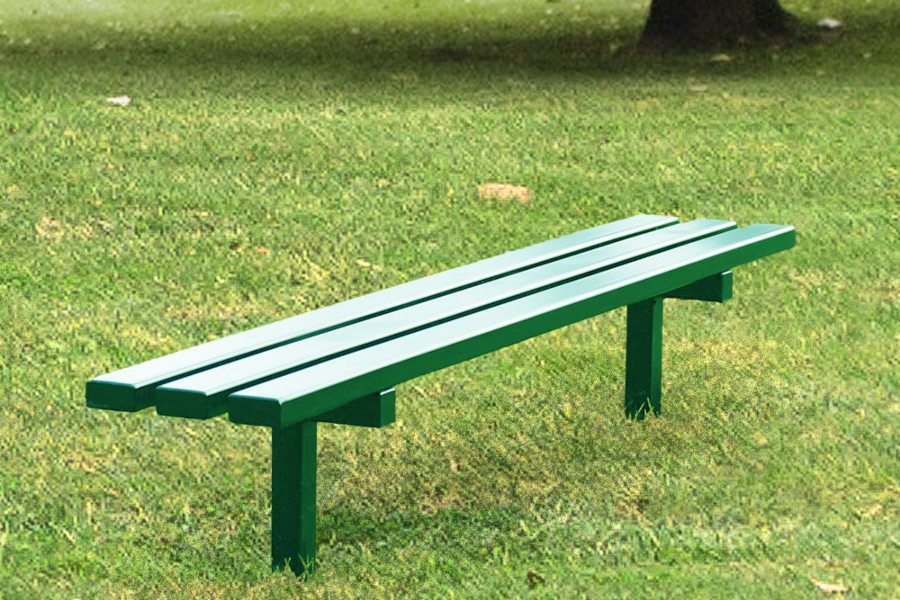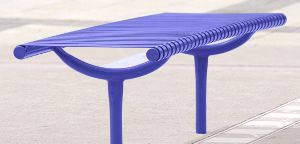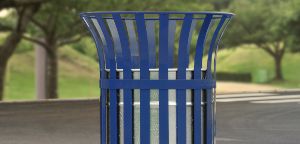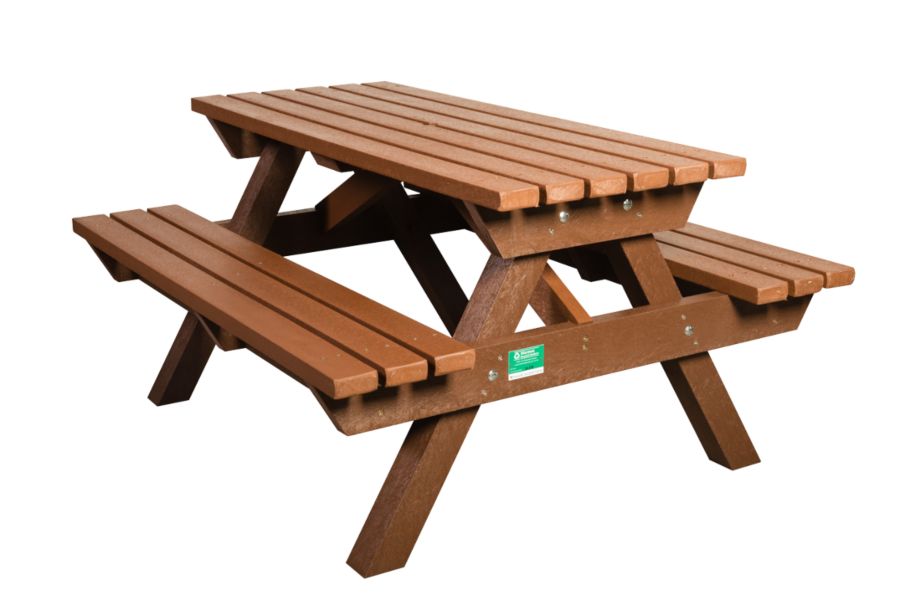Have you ever entered a space and instantly felt at ease? Maybe you walked into a room and somehow felt stressed. This is not just a feeling. It’s your human brain reacting to the physical environment around you.
School design has been an afterthought for too long. Simple, boxy classroom designs have been used without regard for their impact on learning.
But what if we told you that science is there to prove that the walls around us do matter? The exciting field of neuroarchitecture shows us this.
Neuroarchitecture reveals that our built environment has a direct impact on brain function and overall well-being. This is why we need to move toward evidence-based design of all schools. At A&S Landscape, we believe in designing spaces that cater to the learning needs of all ages.
In this article, we will explore the world of neuroarchitecture. We will discuss the importance of light, sound, and various natural elements, along with flexible design ideas, and examine how these elements work together to enhance the learning experience.
How Does the Brain React to the Spaces We Learn In?
Think about how a typical classroom looks. There are numerous straight lines and sharp corners throughout. This is what scientists call a rectilinear design.
What does this mean for the brain? Discoveries in neuroscience have revealed how the brain processes information through lines and shapes.
Neuroarchitecture is a new field that combines the work of architects and neuroscientists, and this approach to designing classrooms enhances school environments. When we encounter sharp corners, our brains automatically respond with a slight sense of stress. It may not be immediately apparent, but it occurs in your mind.
Vartanian, a researcher and psychologist known for his work in the field of cognitive psychology, conducted a well-known study examining how shape affects our minds. They discovered that looking at softer shapes, such as gentle curves or domes, activates the part of the brain associated with happiness and pleasure.
Harsh straight lines and smooth curves stimulate our neural networks in different ways. This is because spaces with curves feel more natural and safe to us. They make you feel at ease, which helps with complex cognitive work.
When a student feels safe, their emotions are kept in check. This important sense of safety is necessary for learning to occur effectively. The activity of our neurons changes in response to what we see and hear in the world. The goal of smart classroom design is to reduce negative stimulation and increase positive engagement.
Every architect or designer needs to use these results in their plans. They need to create environments that are safe and help the brain focus. The better the physical environment is set up, the easier it is for the student’s mind to do the hard work of learning new things.
Why Natural Light Helps Students Learn Better
Natural light is one of the most crucial elements in any building’s design. It’s not only about being able to see your desk or the whiteboard better. Light has a significant impact on how our bodies function.
It really helps our body’s internal clock, also known as the circadian rhythm. The brain gets the message to wake up and be alert when it sees bright natural or artificial light, especially in the morning.
Good light has a direct effect on students’ cognitive development. The right amount of light can prepare the brain for high-level tasks, enabling it to perform at its best. Bad lighting, on the other hand, can cause eye strain, fatigue, and a general feeling of discomfort.
This makes it very hard for students to focus. To put it another way, your brain is using extra energy just to deal with the dark room. It can’t use that energy for other areas like solving problems or thinking deeply.
Light’s sensory input is very strong. We are creating spaces conducive to learning by letting in as much natural light as possible through large windows or, as we do, by installing canopies over outdoor learning spaces. This approach to design is heavily influenced by evidence-based design.
We are striving to create a built environment that works in harmony with the learner’s natural biological rhythms, rather than against them. For students to focus and maintain mental health, their learning environments need to be well-lit.
How Noise and Sound Levels Affect Focus
Sound is another strong sensory element in the classroom. The sounds a student hears can easily cause them to lose focus. Acoustics is the study of how sound travels through a space.
Poor acoustics in classroom design can be a significant distraction that students must contend with on a regular basis. This noise requires the student’s brain to work harder to block out the irrelevant sounds and focus on the teacher. This constant fight wears out the brain’s neurons and slows down the entire learning process.
When a learner is constantly fighting against background noise that they can’t control, it makes them more emotionally aroused. This means they are more likely to experience stress, anxiety, or anger. Their ability to solve important problems quickly goes down.
The goal of good school design is to make spaces where sound levels are kept under control. Neuroscience reveals that quiet, well-planned spaces facilitate the brain’s transition into a state of focused attention.
We need to make sure that the spaces we design have low reverberation and good sound absorption. This is a crucial aspect of designing educational spaces that people often overlook. When we control the sound, it makes it easier to hear the teacher and other students clearly.
Better sound means that students don’t have to expend their mental energy trying to hear over the noise. They can use that energy for the important things they need to learn. This is how a smart physical environment can have a big impact on learning.
How Nature and Outdoor Spaces Calm the Mind
Have you ever considered the way you feel when you walk outside under a protective leaf or sit out in a garden? This feeling is one of comfort, which some scientists call a restorative effect.
The integration of nature, as evidenced by plant life, whether in the form of landscape trees or gardens, impacts the mental hygiene of the environment. Our fundamental relationship to the natural world is biochemically built into our heritage as evolutionary beings.
Social outdoor spaces mean an experience of calmness and rest. It does this because it has a profound impact on emotional responses. When students become fatigued at school, their immediate reaction to observing something natural can reduce their physiological responses to stress.
This produces a more definite sense of security in the body and mind. A child who is organised can handle problems presented by complex learning situations.
The design concept just referred to is known as biophilic design. It attempts to synthesise the best features of the natural world with the built environment.
This is achieved by providing covered outdoor spaces, such as canopies and sail shades, as offered by A&S Landscape, to create environments that foster positive emotional and cognitive development.
These are spaces that provide the greatest degree of health and comprehensive wellness for the learners. Indeed, it is all this that makes it a more wholesome and restful environment. This is largely in line with the important lessons of learning in safe environments.
4 Ways Flexible Classrooms Help Students Stay Active and Engaged
Getting away from long rows of fixed desks is key to taking education into the future. We need flexible environments. These new learning environments are unique in design, as they are created to be flexible.
These spaces recognise that students’ learning is enhanced when they have control over their learning environment and can adjust their surroundings based on the needs of the moment.
Encourage Movement And Physical Activity
Movement is a necessity for healthy brain development in humans. Extensive research in the fields of psychology and neuroscience has demonstrated that prolonged periods of sitting negatively impact long-term focus and retention.
Flexible school settings incorporate ergonomically designed items such as stand-up desks, comfortable fill cushions, and high stools of various heights.
Students can constantly change positions due to the flexibility of the provided furniture. The inclusion of movable items ensures that children remain physically active. This small amount of movement keeps the brain alert and ready to receive new stimuli. In this way, the thoughtful design of flexible classrooms encourages better brain function.
Facilitate Collaboration And Teamwork
Traditional classroom design often makes it challenging to set up collaborative learning activities. Flexible learning spaces are designed to support rapidly evolving learning and collaboration. Students can now easily wheel movable desks together for collaborative problem-solving sessions.
Upon completion of the learning task, they can be quickly moved back for individual learning sessions. This ability to change the environment readily supports complex collaborative learning activities. It also promotes strong neural pathways through social interaction, an essential factor in the learning process, thus facilitating stronger learning environments.
Give Students a Sense of Choice and Control
Giving student control over their physical environment is a deeply empowering possibility. This simple offering directly enhances thoughtful well-being and responsibility in the learning process.
When students are given a choice of where to sit or how to manipulate desk style, they feel an increased sense of safety and ownership. This respect for differences is considered one of the essential topics in modern school design.
This promotes mindfulness and helps students gain emotional regulation before the possibility of distraction even begins. Thus, we learn to promote successful, independent learners.
They Adapt to Different Learning Styles and Activities
The principles of evidence-based design are based on the premise that a one-size-fits-all approach does not meet the needs of all students. Flexible spaces can adapt to various forms depending on the chosen exercise.
It can quickly transform from a large lecture hall to a small, outdoor dining area, which is great for peaceful and quiet meals.
This enhances flexibility, giving credence and respect to the individual differences inherent in every student. By creating an environment that is easily manipulable, we provide ourselves with an easily recognisable learning environment from the outset.
This is a highly effective way of enhancing the learning process for all students as we look toward the future of education.
Conclusion
The primary idea is simple: the walls, floors, and roofs of a school are not blank spaces. They are a powerful, active tool that can either help or hurt a student’s ability to learn.
We now have a lot of research from the fields of neuroscience and cognitive architecture. This study provides a definitive guide for all architects and designers. We need to stop using old, rigid designs and fully embrace neuroarchitecture.
This means considering every sensory aspect, such as the sound quality and the presence of curved shapes. We collaborate with school design teams at A&S Landscape to incorporate covered outdoor learning spaces, utilising our canopies and shade sails.
The primary goal is to prepare the human brain to function more effectively. We can create environments that promote overall health and ensure every child has a positive learning experience by focusing on evidence-based design.


